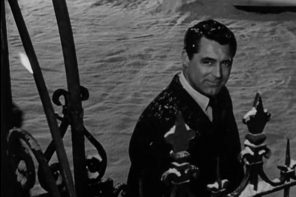In his first book, published a the ripe age of 26, Nietzsche observed that “life is justified only as an aesthetic phenomenon.” He never retreated from that bold pronouncement, and scholars have speculated ever since about what precisely he meant to say.
It is easier to make sense of the negative case Nietzsche was intent on making. He wanted to insist that human life is not justified as a moral phenomenon, nor is it as a religious phenomenon. Which is to say: Nietzsche wished to distance himself from a certain kind of triumphalist, “progressive” historicism that viewed the emergence of modern Europe as the end of a long historical process culminating in a kind of modern socio-political ideal; and he wished to distance himself from a certain kind of triumphalist modern theology that read the emergence of Christianity, perhaps primarily in Protestant Europe, as the very culmination of the long process of human spirituality, with its definitive revelation of the way in which an event in this world might secures humanity’s place in the next.
For Nietzsche, people were well-advised to place less stock in Europe, in Christianity, and even in this world. But the trick for Nietzsche is this: he also rejects any notion of retreating from this world to some other one.
Where, then, is the discontented modern soul to go? In a word, such a modern soul might best return to artistic creativity for its salvation, understanding that the creation of beauty lies at the very heart of the human project, being the only real way to justify our curious and unique place on this strange and volatile planet.
Which brings me to Italy, Nietzsche’s own favored destination in his final, peripatetic years.
Or more specifically, to Rome at Christmastime. They are snapshots, images, that most endure at such a time:
Wednesday noontime: While working in an old archive adjacent to the justly famous Chiesa Nuova (where several imposing scenes for Angels and Demons were shot last year), an elderly woman invites me to return that evening for a concert. The “concert,” such as it was, was a Catholic Mass distinguished by the presence of so many dignitaries in elegant evening dress (and reserved seating) that it seemed more a parliamentary wedding than a church service (each figure arrived in style, creating what, by the end of the evening, seemed a veritable island-sea of identical black Mercedes), and also by the melifluous notes of serene choral music that had inspired my invitation at midday.
Friday morning: While crossing the Piazza at Saint Peter’s Cathedral, I notice an enormous Christmas tree, presumably erected the night before. It has not been lit yet, because they are also installing an elaborate manger scene, such as one finds all over the city now… but without the baby Jesus in his crib. His little body will not be placed there until Christmas morning, marking the natal moment in a most fitting and “incarnational” way.
Saturday morning: At the State Archives of Rome, I notice signs directing an audience to a Gospel music concert at noon. The chorus of native Roman singers offered up a soaring selection of old Gospel tunes (“Joshua fit the battle of Jericho” and “It’ll be all right” plus a stunning a capella version of “Amazing Grace”) and traditional English-language Christmas favorites (like “Jingle Bells” and “Merry Christmas”). Somehow, the choral delivery in charming Italian accents only added to the subtle luminosity of the scene.
We would be mistaken to view this as a uniquely Italian phenomenon, a uniquely Italian sense of cultural finesse. Nietzsche sometimes made precisely that mistake.
We would do well to recall candlelit Christmas Eve services, sunrise Easter services held in gardens or on beaches, churches done one out in elaborate finery for weddings, festooned for fuespecially recall one candlelit Christmas Eve where the minister observed that, since everythng and everyone looks better by candlelight, then God must have seen the earth by candlelight on the evening he comitted His Son to it. Protestants in North America can play the beauty-in-religion game as well as their spirited Italian Catholic cousins can.
The point I wish to underline is the rather obvious, but not-at-all trivial—and seemingly pervasive— phenomenon of rendering religion as beautiful and pleasureable, even and especially for the holidays. I haven’t even tried to talk about all the food…
It is not only a renegade philopher like Nietzsche who senses that beauty is the default position for the slightly estranged human soul. Traditional religions well recognize that the creation of beauty in worship is one important way to express the ineffable, to capture the sublimity of our most sublime affairs, and perhaps even to participate in the life of divine creativity itself. If life, or religion, is to be “justified,” then that jusfication does indeed have something to do fundamentally with aesthetics and good taste(s).
I hope to have more to say about this large and complex confluence of art, religion and beauty in the new year.
But for now, at vernal solstice-time, I’ll rest content to invite one and all in the extended RD community to eat, to drink, to be merry… and to try to be grace-full in so doing.



